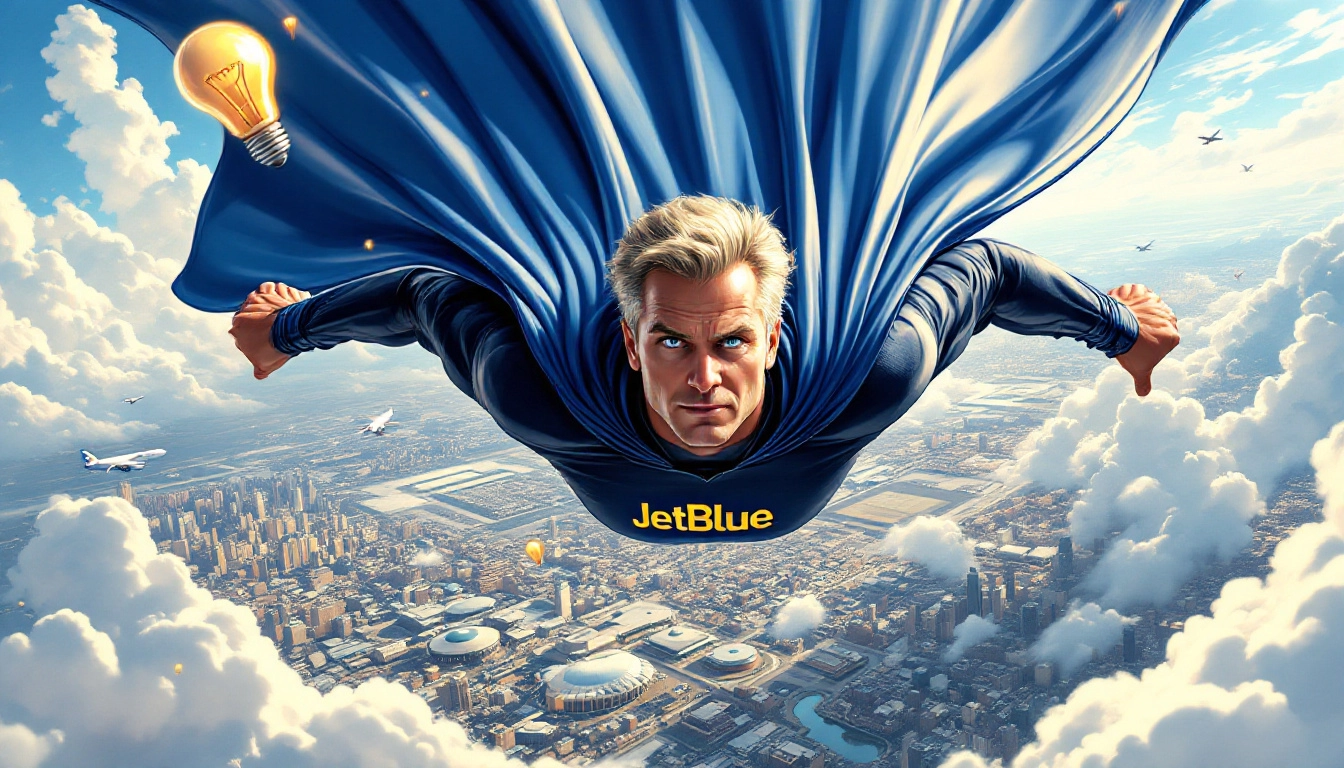David Neeleman ADHD: Using ADHD to Redefine Air Travel and Build an Empire

When you think of air travel, innovation isn’t the first thing that comes to mind. For years, airlines operated with little variation, focusing on cost-cutting and standardizing experiences. Then came David Neeleman, a visionary entrepreneur with ADHD, who would shake up the entire industry. Neeleman’s ADHD wasn’t just a hurdle to overcome—it was the driving force behind his ability to think differently, innovate rapidly, and dominate one of the most competitive industries in the world.
Neeleman’s career has been marked by bold moves and visionary thinking, but one moment stands out above the rest—the launch of JetBlue Airways in 2000. This defining moment in his career wasn’t just about creating another airline; it was about reshaping how people experienced air travel. Through his ADHD-fueled creativity, hyperfocus, and relentless pursuit of excellence, Neeleman turned his idea into one of the most successful airlines in U.S. history.
The ADHD Advantage: Visionary Thinking and Rapid Innovation

David Neeleman has never hidden his ADHD diagnosis. In fact, he’s often spoken about how ADHD allowed him to see opportunities where others saw obstacles. The fast-paced, multitasking brain that often struggled in school became a wellspring of creative ideas and innovative solutions in business. JetBlue’s launch was the product of this ADHD-driven ability to think outside the box.
The Moment of Triumph: Launching JetBlue Airways
Before JetBlue, David Neeleman had already made waves in the airline industry. He was involved in launching Morris Air, which was eventually acquired by Southwest Airlines, and he was instrumental in creating Open Skies, the first real-time airline reservation system. But despite these successes, Neeleman’s true moment of triumph came with JetBlue—an airline built on the idea that low-cost travel didn’t have to mean a stripped-down, unpleasant experience.
In February 2000, JetBlue took its inaugural flight from New York City’s JFK Airport to Fort Lauderdale, Florida. It was a momentous occasion, not just for Neeleman but for the entire airline industry. In a market dominated by giants like American Airlines, Delta, and United, the idea of launching a new airline seemed risky, if not foolhardy. But Neeleman’s ADHD allowed him to see what others couldn’t: the opportunity to create a customer-centric airline that offered low fares without sacrificing quality.
JetBlue’s launch was unlike anything the industry had seen before. Neeleman introduced features that seemed revolutionary at the time: free in-flight entertainment on personal screens at every seat, extra legroom, and high-quality customer service—all at an affordable price. These weren’t just gimmicks; they were Neeleman’s ADHD-driven innovations designed to solve real customer pain points. Where others focused on cutting costs and reducing amenities, Neeleman focused on enhancing the customer experience without compromising on price.
Hyperfocus: The Key to JetBlue’s Success
One of the hallmark traits of ADHD is hyperfocus—a state of intense concentration that allows individuals to zero in on tasks with extraordinary precision and depth. For David Neeleman, hyperfocus was the key to JetBlue’s success. Once he had the vision for the airline, he was relentless in executing it, paying attention to every detail, from the seating configuration to the branding and customer service training.
Neeleman’s hyperfocus allowed him to perfect JetBlue’s business model. He wasn’t just starting an airline; he was obsessively fine-tuning every aspect of the customer experience. This level of attention to detail, combined with his visionary thinking, gave JetBlue a competitive edge. Neeleman understood that the airline industry wasn’t just about moving people from point A to point B—it was about creating an experience that passengers would want to return to again and again.
Hyperfocus also helped Neeleman tackle the logistical challenges that came with launching an airline. Building an airline from scratch is no small feat. It requires navigating complex regulatory environments, securing financing, and managing countless moving parts. But Neeleman’s ability to immerse himself in every detail allowed him to execute his vision with precision, turning what could have been a logistical nightmare into a well-oiled machine.
Creativity and Innovation: Breaking the Mold
Creativity is another ADHD trait that Neeleman leveraged to dominate in the airline industry. JetBlue wasn’t just another low-cost carrier; it was a brand that prioritized innovation at every level. Neeleman’s creative thinking helped him break away from the industry’s status quo and develop solutions that other airlines hadn’t considered.
For example, Neeleman’s decision to offer free DirecTV at every seat was a game-changer. At the time, no other airline was offering in-flight entertainment on this scale, especially not for free. He recognized that passengers didn’t just want cheap tickets—they wanted an enjoyable experience. By thinking creatively, he was able to offer a service that delighted passengers and made JetBlue stand out in a crowded market, highlighting the importance of screen time management.
Another example of Neeleman’s creative approach was his focus on customer service. Many low-cost airlines were notorious for cutting corners on service to keep fares low, but Neeleman took the opposite approach. He trained JetBlue employees to provide exceptional service, understanding that happy customers would be more likely to return. This focus on the customer experience was revolutionary in an industry where low-cost often meant low-quality.
ADHD and the Willingness to Take Risks
One of the defining characteristics of ADHD is impulsivity, which often translates into a willingness to take risks. For Neeleman, this trait wasn’t a flaw—it was a strength. His ability to embrace risk allowed him to push boundaries and challenge the airline industry’s established norms.
Starting JetBlue was a massive risk. The airline industry was already saturated with major players, and launching a new airline seemed like a long shot. But Neeleman’s ADHD-driven impulsivity gave him the courage to take that risk and turn it into a success. He wasn’t afraid to disrupt the status quo, and that willingness to take bold risks was instrumental in JetBlue’s rise to prominence.
Resilience: Bouncing Back from Setbacks

ADHD is often associated with a certain resilience, a tenacity that allows individuals to bounce back from setbacks with renewed determination. Neeleman’s career has had its fair share of challenges, but his ADHD-driven resilience has helped him weather those storms.
In 2007, Neeleman faced one of the most significant crises in JetBlue’s history. A severe snowstorm caused widespread delays and cancellations, leaving passengers stranded on planes for hours. The event was a public relations nightmare, and many thought it would spell the end of JetBlue’s success. But David Neeleman’s ability to bounce back came through. He took full responsibility for the incident, apologized to customers, and introduced a “Customer Bill of Rights” to ensure that JetBlue would handle future disruptions better.
Instead of crumbling under the pressure, Neeleman’s resilience allowed JetBlue to regain customer trust and continue growing.
Conclusion: ADHD as the Superpower Behind JetBlue’s Success

David Neeleman’s story is a powerful testament to how ADHD can be a superpower in the world of business. His visionary thinking, hyperfocus, creativity, risk-taking, and resilience—all traits commonly associated with ADHD—were the driving forces behind JetBlue’s success. Neeleman didn’t just start an airline; he redefined air travel and built an empire by turning his ADHD traits into powerful tools for innovation and success.
In a moment of triumph, David Neeleman used ADHD to dominate an industry that many thought was impenetrable. His story serves as a reminder that ADHD, when embraced and channeled, can lead to extraordinary achievements.


